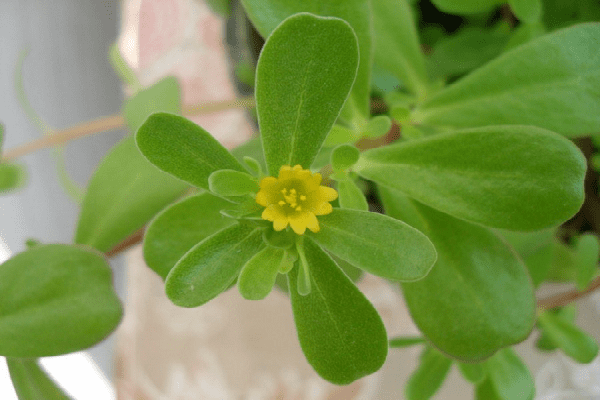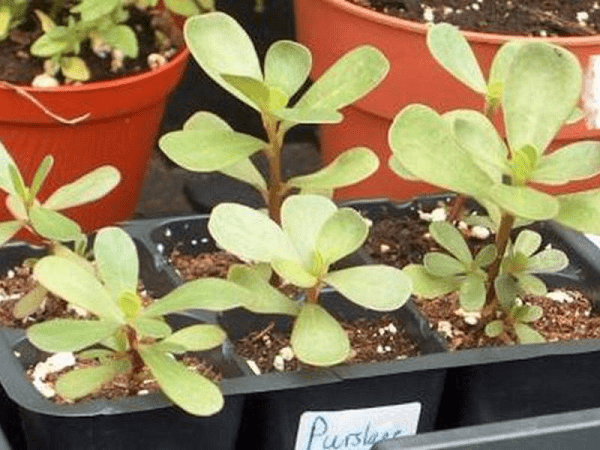Plants with a healing effect >>>> Purslane - medicinal properties and use in medicine
Purslane - medicinal properties and use in medicine.

Purslane is a plant best known as an ornamental flower and vegetable crop. But the medicinal properties of purslane should be evaluated before using it for food.
Purslane is a very tenacious plant, despite its one-year life cycle. Purslane seeds endure frosts while in the ground, and the next year they grow on their own without any help with fertilizing the soil. In other words, if you sowed purslane on any piece of land and gave it the opportunity to bloom and form seeds, then next year you will not have to worry about planting it.
Purslane is a fruitful plant. Its plump, watery leaves are able to quench thirst, play the role of useful fiber, and replace any green vegetable in a salad. The leaves and stems of purslane are eaten without peeling.
The edible properties of purslane relate to its garden variety, and the decorative purslane is not suitable for use in food. The nutritional value of purslane is based on a wide range of minerals and a high content of vegetable protein. Almost all useful trace elements (including zinc, iron, magnesium, potassium, sodium, calcium) are contained in fresh purslane shoots.
Purslane tastes sour, which explains the high content of ascorbic acid in its composition (50 mg per hundred grams of green mass). But this is not the end of its vitamin properties, since, in addition to vitamin C, purslane is rich in carotene (2.5 mg per hundred grams of green mass).
The medicinal properties of purslane have recommended it as a plant of a diuretic nature and as a means of improving the enzymatic properties of the gastrointestinal tract. This means that purslane is useful for people with indigestion and diseases of the urinary system. But, despite the diuretic properties, which should lower blood pressure, purslane is not recommended to be consumed in large quantities by people suffering from hypertension, since its chemical composition (norepinephrine) increases blood pressure. But it is precisely this property that puts purslane in the category of plants that improve mood, since in the body the precursor of norepinephrine is dopamine, a substance that affects our emotional mood.

The medical significance of purslane in nutrition provides its unique property to increase the production of insulin in the body, which makes it useful in the diet of people with diabetes. That is, the use of purslane in food helps to reduce blood sugar and is useful for people who are on a diet for diabetics. To enhance the effect, an aqueous infusion is made from fresh purslane, where the concentration of nutrients increases. To prepare the infusion, freshly picked leaves and stems of purslane are crushed and poured with hot water, insisted, filtered and drunk.
All the medicinal properties of purslane can disappear if the plant is boiled (for example, for filling soup). For this reason, in order to preserve the beneficial properties of purslane, it is recommended to use it fresh.
Purslane is easy to grow at home: in a container on a windowsill or on a balcony, which makes it a plant for a home medicine cabinet on the windowsill of city dwellers.

Read

Read



























